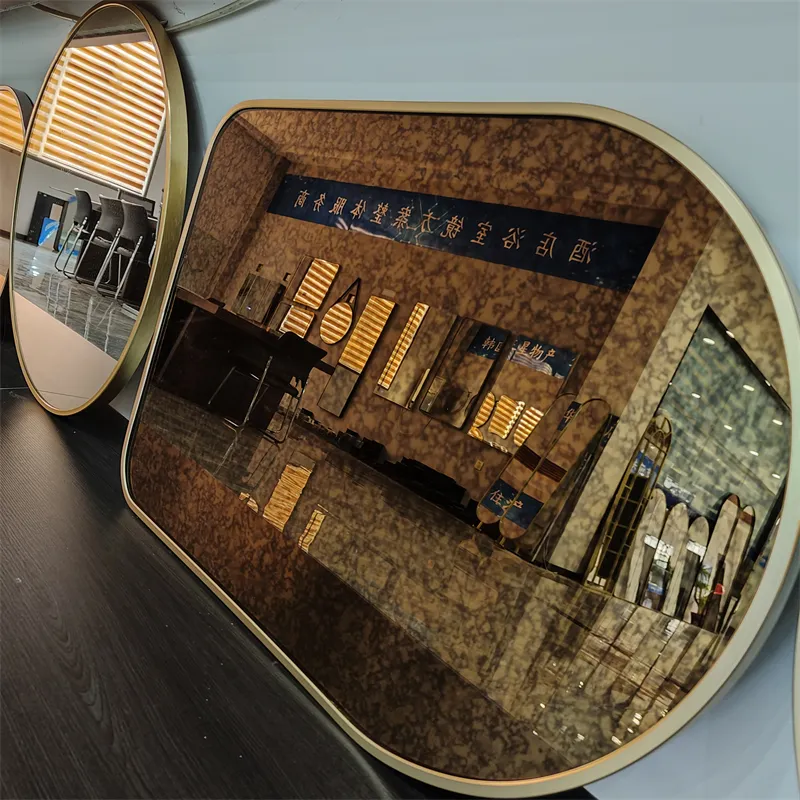Nov . 09, 2024 22:06 Back to list
Exploring the Benefits and Uses of Green Float Glass in Modern Architecture
The Versatility of Green Float Glass
Green float glass, an essential material in the construction and manufacturing industries, has garnered significant attention due to its unique properties and aesthetic appeal. Produced through the float glass process, where molten glass is floated on molten tin to create a flat, uniform surface, green float glass possesses distinct characteristics that make it suitable for a variety of applications.
Manufacturing Process
The manufacturing of green float glass begins with raw materials, primarily silica sand, soda ash, and limestone. These ingredients are melted together in a furnace at high temperatures, typically around 1,700 degrees Celsius. Once melted, the glass mix is poured onto a bed of molten tin. Due to the difference in density, the glass floats on the tin, forming a smooth, flat surface. The green color of the glass comes from the iron oxide present in the raw materials, which gives it its characteristic hue.
The cooling process is critical; the glass is gradually cooled in an annealing lehr to relieve internal stresses. After cooling, the glass is cut into sheets of various sizes, ready for transport and use. This process not only ensures a high-quality product but also allows for efficient mass production, meeting the demands of various industries.
Aesthetic Qualities
Green float glass is renowned for its aesthetic qualities. The subtle green tint provides a unique look that enhances the visual appeal of buildings and structures. Its color works harmoniously with natural surroundings, making it an excellent choice for architectural designs that aim to blend with the environment. Architects often appreciate the way it filters light, creating a soothing ambiance in interior spaces while reducing glare.
Moreover, the reflective quality of green float glass adds a modern touch to building facades. When used in commercial buildings, it can create stunning visual effects, contributing to energy efficiency by reflecting excess sunlight and stabilizing indoor temperatures. This dual function of aesthetic enhancement and energy efficiency positions green float glass as a forward-thinking choice for contemporary architecture.
green float glass

Energy Efficiency and Sustainability
In today's world, the push for energy-efficient and sustainable materials is more significant than ever. Green float glass plays a crucial role in this movement. Its ability to reflect sunlight helps reduce the heat gain in buildings, leading to lower energy consumption for air conditioning. This not only reduces operational costs for building owners but also contributes to lower carbon footprints, aligning with global sustainability goals.
Furthermore, green float glass is fully recyclable. At the end of its life cycle, it can be crushed and remelted, allowing it to be reused in the production of new glass products. This recycling process conserves raw materials and energy, making green float glass a standout choice for eco-conscious consumers and businesses alike.
Applications
The versatility of green float glass extends to various applications, making it a staple in residential and commercial construction. Its uses include windows, glass doors, partitions, and facades. In residential settings, green float glass is commonly employed for energy-efficient windows, providing homeowners with natural light while minimizing energy costs.
In commercial applications, green float glass is favored for its elegant appearance and performance. Skyscrapers and corporate offices often showcase large glass panels made from this material, further enhancing their aesthetic appeal. Additionally, the use of green float glass in interior design, such as in office partitions and decorative elements, has grown in popularity, reflecting a trend toward using glass as a central design feature.
Conclusion
Green float glass is much more than just a building material; it is a symbol of modern design and sustainability. Its unique combination of aesthetic appeal, energy efficiency, and versatility makes it an ideal choice for a wide range of applications. As sustainability continues to be a top priority across industries, the role of green float glass in promoting eco-friendly practices cannot be overstated. With advancements in technology and increasing demand for sustainable materials, the future of green float glass looks promising, ensuring its place in the architectural landscape for years to come.
-
Safety and Style with Premium Laminated Glass Solutions
NewsJun.24,2025
-
Reinvents Security with Premium Wired Glass
NewsJun.24,2025
-
Premium Float Glass Line for Modern Architecture
NewsJun.24,2025
-
Low Emissivity Glass for Energy-Efficient Architecture
NewsJun.24,2025
-
High-Performance Insulated Glass Solutions for Modern Architecture
NewsJun.24,2025
-
Elevates Interior Style with Premium Silver Mirror
NewsJun.24,2025
Related PRODUCTS














